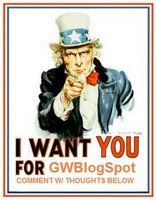The Japanese have a deep emotional attachment to the spring season and, especially, the sakura—the cherry blossoms. For them, the beauty of cherry blossoms is its poignant reminder of the briefness of life—once the flowers reach their blooming peak, they start to fall down from the trees after a week. The flowers are also a messenger of new beginning—Japanese schools and businesses start their new year from April 1. Many people sit under the trees, accompanied by their friends, family, food and drinks.
Even though you cannot open a beer bottle outside in D.C., as I went down for a stroll along the Tidal Baisin, yesterday, I found out that the people here were also celebrating the arrival of the new season.
Few people, however, know that the idea to plant so many cherry blossom trees in Washington—and the money to pay for them—came from Dr. Jokichi Takamine. So here is a brief story of how the cherry trees came to Washington, D.C.
Dr. Takamine, born in Japan in 1854, lived and worked in New York for years. He was the first person in history to isolate a human hormone—adrenaline—and to use it for medical purposes. Today, in the U.S., we know it by the name epinephrine. Doctors use epinephrine when patients are in cardiac arrest or to stop hemorrhaging; to deal with shock and allergic reactions; and even to treat asthma and glaucoma.
The company that he founded, Sankyo Pharmaceuticals, today known as Daiichi Sankyo, is the fourth largest pharmaceutical company in Japan and the 22nd largest in the world.
Helen Herron Taft, after becoming First Lady in 1909, decided that she wanted to create a public area in Washington where everyone could enjoy the outdoors. She thought of the recently-developed Potomac Park area and decided to plant Japanese cherry blossom trees there. The US Army Engineers found some trees in Pennsylvania and planted them.
Shortly thereafter, Dr. Takamine came to Washington to attend a meeting. He heard about Mrs. Taft and the Japanese trees so, when he met her, he asked: “How are your trees coming along, and how would you like 2,000 of them?”
 For political reasons, Takamine knew that it would be inappropriate for him—as a private businessman—to be out in front on this. So the offer was put into official channels, and Mayor Yukio Ozaki of Tokyo made the gift.
For political reasons, Takamine knew that it would be inappropriate for him—as a private businessman—to be out in front on this. So the offer was put into official channels, and Mayor Yukio Ozaki of Tokyo made the gift.
 For political reasons, Takamine knew that it would be inappropriate for him—as a private businessman—to be out in front on this. So the offer was put into official channels, and Mayor Yukio Ozaki of Tokyo made the gift.
For political reasons, Takamine knew that it would be inappropriate for him—as a private businessman—to be out in front on this. So the offer was put into official channels, and Mayor Yukio Ozaki of Tokyo made the gift.When the trees arrived the next year, 1910, the trees were infested with a number of diseases and insects. The trees had to be burned so the infestation would not spread. Dr. Takamine was not concerned. He again stepped forward and offered to pay for a second shipment—this time not 2,000 trees, but 3,000.
Well-off financially and probably the most famous and respected Japanese in America at that time, Jokichi Takamine continued to do everything that he could to promote better understanding between the land of his birth and the land that had given him such great success.
Dr. Takamine died in 1922 and is buried in New York. His creation—epinephrine—continues to save hundreds of thousands of lives today. And the trees that he paid for continue to contribute to the great beauty of the Nation’s Capital.
The flowers are still in their gobuzaki—half-bloomed-state—but over the next week, the flowers will be in full bloom. The National Park Service predicts April 4 as this year’s peak bloom date.



1 comment:
This is probably the only GWBlogspot post I've ever actually enjoyed reading. Thanks!
Post a Comment